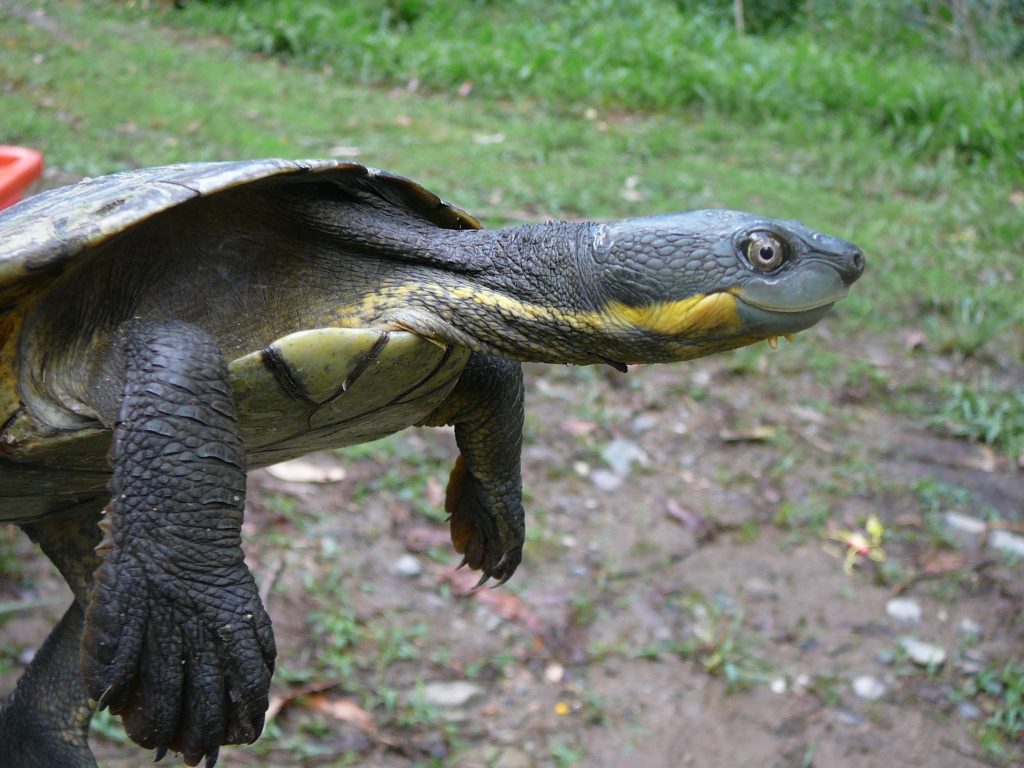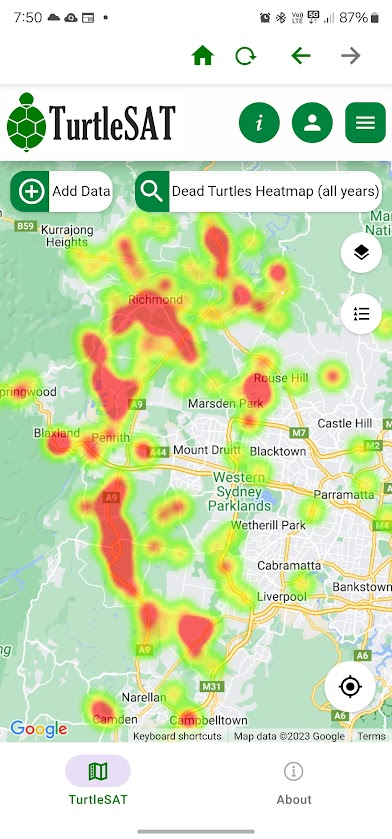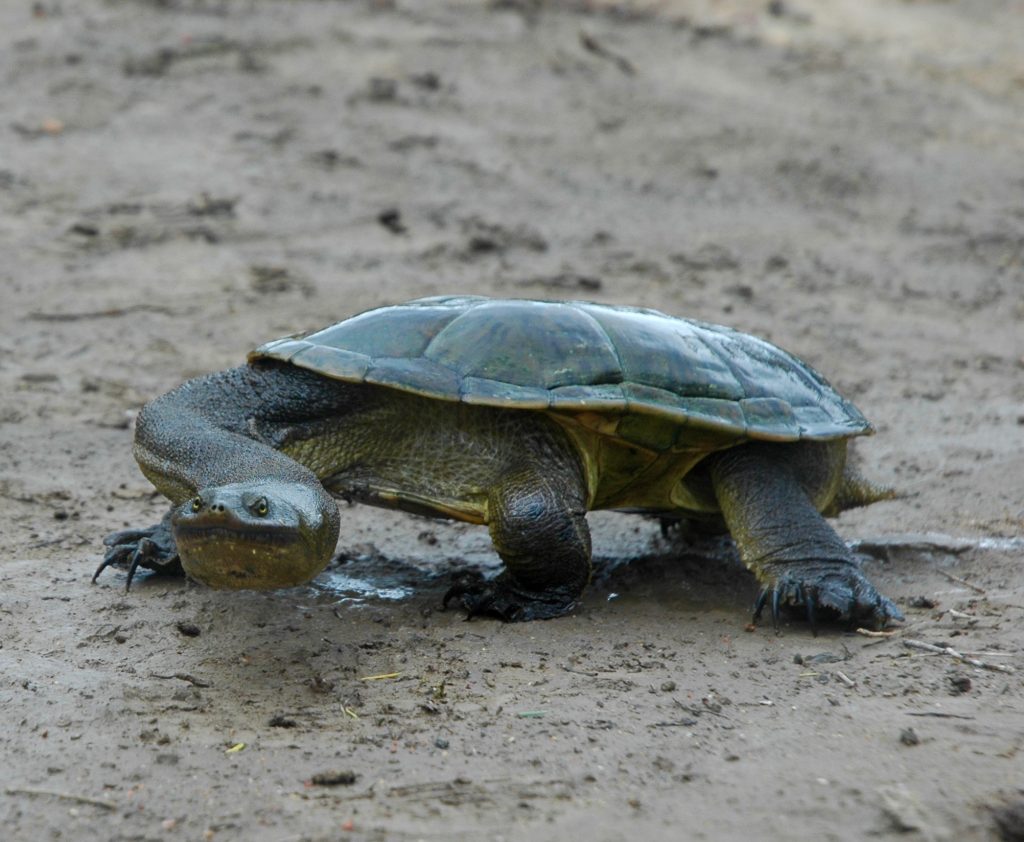Today is World Turtle Day! Australia is home to 23 species of freshwater turtles which you can discover through the ALA! We’re celebrating the day by chatting to Dr Ricky Spencer – Associate Professor from Western Sydney University who co-leads the 1 Million Turtles (1MT) citizen science project.
Q: Where did the idea for the 1 Million Turtles project come from?
The story starts with a stark realisation. In 2015, a mysterious virus swept through the Bellinger River in northern New South Wales, wiping out a staggering 90% of the critically endangered Bellinger River Snapping Turtle (Myuchelys georgesi) population. This devastating event highlighted the urgent need for large-scale freshwater turtle conservation efforts. Researchers from leading Australian universities knew traditional methods wouldn’t suffice. They needed a way to harness the power of the public, a way to give everyone a voice in turtle conservation. Enter citizen science, and the innovative 1MT project was born.

Q: What role does citizen science play in this project?
Citizen science is at the very core of 1MT. Why? Because freshwater turtles are shy and elusive creatures. Traditional research methods often lack the necessary scope to track their populations effectively. Imagine the difference millions of eyes across the country can make! Through the user-friendly TurtleSAT app, citizen scientists become data collection heroes.
Q: What kind of turtle data are you interested in collecting through the TurtleSAT app?
TurtleSAT is more than just a reporting tool. Inspired by the Bellinger River crisis, the app is designed to capture a wide range of turtle data. See a healthy turtle basking on a log? Snap a picture and submit it through TurtleSAT. Witness a turtle struggling to cross a busy road? Report the location and type of road within the app. Notice unusual behaviour, like a turtle with lesions or difficulty moving? Document your observations with photos or videos and submit them through TurtleSAT. This detailed data allows researchers to identify threats, track populations, and understand the overall health of freshwater turtle populations.
But 1MT goes beyond mere data collection. The program is passionate about transforming participants from observers to active conservation partners. This is where the exciting turtle data comes in. Citizen scientists are trained to collect information beyond sightings. They learn nest monitoring and protection protocols, conduct standardised surveys for invasive species like foxes (think National Nest Predation Survey), and even analyse data through TurtleSAT. This fosters a sense of ownership and empowers communities to become active conservation stewards.

Q: What impacts have you seen from the 1MT project so far?
The impact of the 1MT project has been truly shell-ebrating! Winning the prestigious Eureka Prize for Innovation in Citizen Science in 2023 served as a major validation and a springboard for further growth. The recognition brought well-deserved attention to the project’s innovative approach and its crucial role in turtle conservation.
Another exciting aspect of 1MT is the collaboration with the Ngarrindjeri Aboriginal Corporation. This partnership aims to record the rich knowledge and history of turtles held by the Ngarrindjeri people, the Traditional Owners of the land. Integrating Indigenous knowledge systems with scientific research offers invaluable insights into turtle ecology and conservation practices.
So, what exciting discoveries have emerged from the mountains of data collected so far? Well, the results are nothing short of fascinating! Citizen science data has played a key role in identifying hotspots of turtle mortality on roads. This has led to targeted signage, infrastructure improvements, and the creation of “Turtle-Safe” roads. Additionally, the data has informed conservation advice documents for numerous turtle species under the EPBC Act, a critical step towards their protection.
Beyond scientific advancements, the program has fostered a positive shift in public attitudes and behaviours towards turtles. Community initiatives like Turtle Islands – safe havens built by local communities for nesting turtles – showcase the power of collective action.
Q: How can the public get involved?
The 1MT project is actively seeking new citizen scientists to join the movement. How can you get involved? Download the TurtleSAT app, report your turtle sightings, and participate in data collection efforts. You can also spread awareness about the project, support fundraising initiatives, or even explore volunteering opportunities with local turtle conservation groups. Become a champion for freshwater turtles!
To learn more about the 1 Million Turtles project, visit the website here, and download the TurtleSAT App.
View the records of this project on the ALA here.
